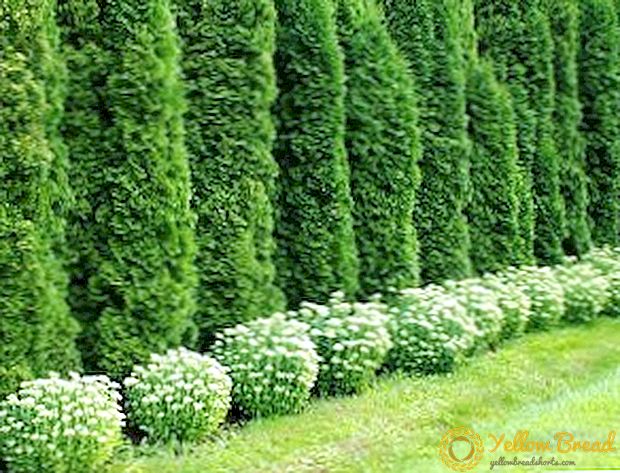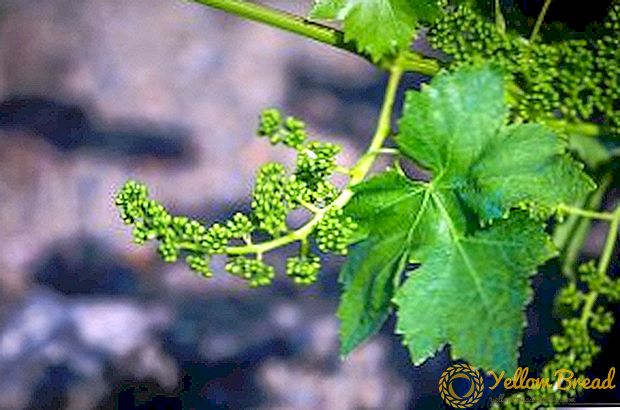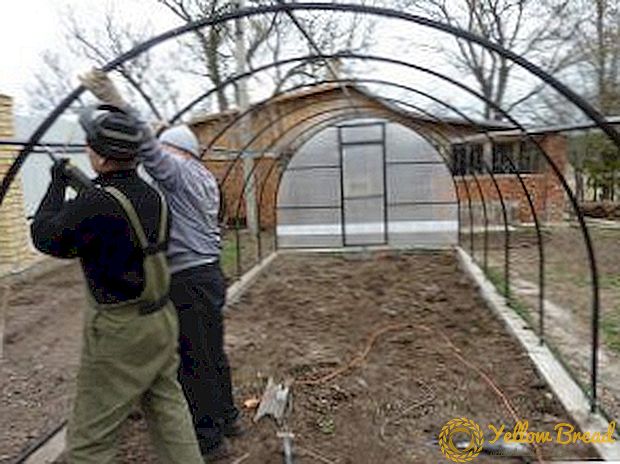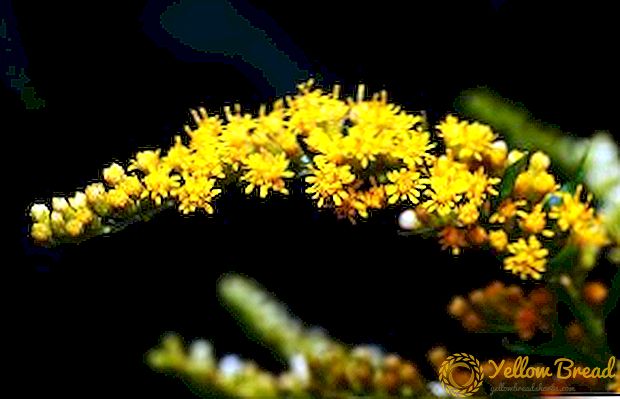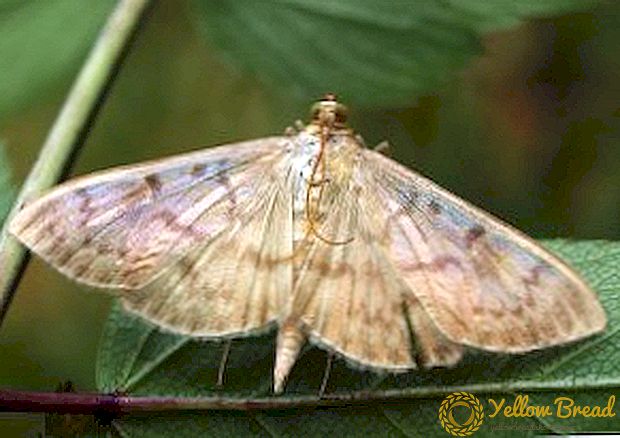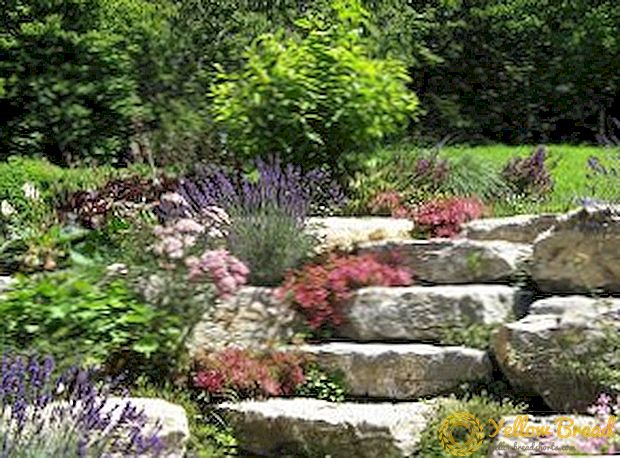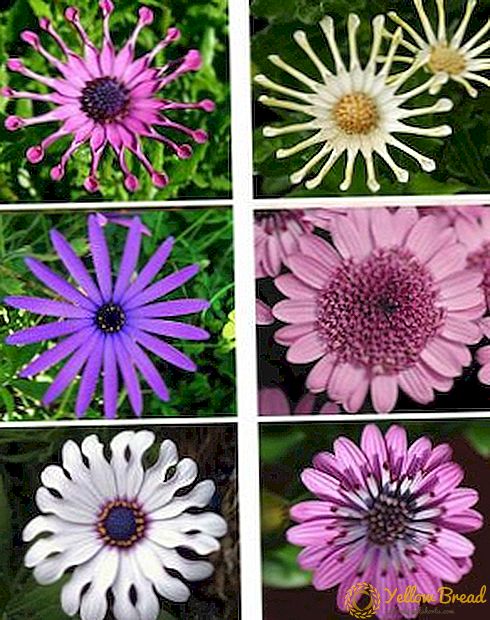 Osteospermum - This is a gentle, beautiful flower that is widely used in Europe to decorate gardens, flower beds and balconies.
Osteospermum - This is a gentle, beautiful flower that is widely used in Europe to decorate gardens, flower beds and balconies.
The plant is originally from Africa - the Cape Province of South Africa.
The flower is very similar to a daisy or a daisy, for which it is called an African daisy, an African daisy, a blue-eyed daisy or a Cape daisy.
Osteospermum, long appreciated by European flower growers, is just beginning to gain popularity among our gardeners. However, if you set out to decorate your balcony or flower garden to envy passersby, pay attention to the amazing Cape chamomile. Moreover, being distinguished by high decorative qualities and long flowering, the plant is quite unpretentious in its care.
- Growing osteosperm seedlings
- Time for sowing seeds for seedlings
- Substrate for growing seedlings
- Sowing seeds for seedlings
- Conditions for seed germination
- Care of seedlings
- Hardening seedlings
- Planting of osteosperm seedlings in open ground
- Time for planting seedlings
- Location selection
- Planting seedlings and distance between plants
- Combination of osteosperm with other plants
- Care and cultivation of osteospermum
- Watering mode
- Plant nutrition
- Pruning inflorescences
- How to save osteospermum in winter
- Osteospermum grafting
- Types and varieties of osteospermum
Growing osteosperm seedlings
Growing osteospermum is possible in two ways: seed and grafting. But there are varieties that can only be propagated with the help of seeds. The landing of osteosperm is possible immediately in open ground to a permanent place. But in this case, the bloom will come quite late. In order to observe the earlier flowering of osteospermum, it is better to grow it on seedlings. 
Time for sowing seeds for seedlings
In order for the plant to bloom in June, it is desirable to sow the seeds for seedlings from late March to early April. The flower can be grown as an annual and as a perennial plant, depending on the climatic zone and natural conditions. Osterosperum requires warm weather for germination, about +18 ° C will be the optimum temperature when it can be planted on seedlings.Under these conditions, the first shoots will appear within 10 days.
Substrate for growing seedlings
The soil for the landing of osteospermum should be loose. As a substrate, you need to take a mixture of turf and leaf land, humus and sand in equal parts. You can also use sterilized loose peat-sand mixture in equal proportions.
Sowing seeds for seedlings
 The seeds of the plants are large enough and have good germination, so they can be planted immediately in pots.. This will avoid the stage of picking, which may damage the root system. There is also no need to plant several seeds in one pot, one in each is enough.
The seeds of the plants are large enough and have good germination, so they can be planted immediately in pots.. This will avoid the stage of picking, which may damage the root system. There is also no need to plant several seeds in one pot, one in each is enough.
Planted seeds, deepening them in the ground at 0.5 cm, then covered with earth.
Conditions for seed germination
Containers with seedlings must be covered with a film or glass, placed in a bright place and the air temperature should be about +20 ° C. Rapid cultivation of seedlings of osteospermum from seeds is possible in bright light and moderate temperature. In the heat, it grows worse, so it is best to place the seedlings on a cool, glazed balcony.
Care of seedlings
 Seedlings require regular moderate watering without waterlogging.
Seedlings require regular moderate watering without waterlogging.
It is necessary to feed shoots once, approximately at the end of April, two weeks before transplanting into open ground.
For spraying suitable weak solution of organic and mineral fertilizers. Beginning gardeners argue about whether to pinch osteospermum and what varieties need it.
Among professionals, it is considered that tall plant varieties require the obligatory pinching of the tops of the shoots at the seedling stage, which is carried out twice. This will allow a little to slow down the stretching of the shoots, to form a beautiful bush and provide abundant color.
Hardening seedlings
Osteospermum is quite cold-resistant, but despite this, it is desirable to conduct hardening of young plants. As soon as the first true leaflets appear on the seedlings, it is necessary to lower the temperature for a short period, opening a window or a balcony door. You need to start from 10-15 minutes, gradually prolonging the procedure and lowering the temperature to +12 ° C.
Planting of osteosperm seedlings in open ground
When the threat of sudden changes in temperature and spring frosts disappears, the time for planting in open ground comes for osteosperm saplings.
Time for planting seedlings
The grown and grown seedlings are planted in a permanent place in late May or early June, depending on the natural and climatic conditions. 
Location selection
For planting seedlings choose a sunny, well-warmed place, closed from the cold gusts of wind. Solar illumination is important for the beauty of flowering, which will be very scarce in the shade. Osteospermum should be planted in light, loose, fertile, well-drained soil. Fertilizer is better to make in the autumn, as the plant does not like an oversupply of organic supplements.
Planting seedlings and distance between plants
For planting seedlings in the open ground choose a warm, sunny day. Saplings are handled with an earthen ball into previously prepared pits, then they well knead the soil around them and pour it with warm water. Osteosperm is planted, providing seedlings with ample space, at a distance of 30 to 130 cm, depending on the variety.
Combination of osteosperm with other plants
Osteospermum occupies an important place in landscape design and summer balcony compositions of amateur flower growers. In plantings, it goes well with sun-loving, erect annuals or herbs, such as gatsania, lobariya, bell, doroteanthus, or tender felicia. 
Osteospermum also looks great with geraniums, geyher, Verbena variety Embress red, rudbeckies, cosme and caliberraa. All of these ornamental plants have similar requirements for growing conditions.
Care and cultivation of osteospermum
Osteospermum is a colorful and unpretentious flower, the description of agrotechnical measures for its cultivation and care consists of several main points.
Watering mode
The osteospermum flower needs moderate, regular watering, especially in dry, hot weather. In winter, the plant needs less water, it needs to be watered in such a way as to prevent the soil from drying out. However, the flower does not tolerate too moist soil.It is necessary to periodically loosen the soil with weeding.
Plant nutrition
African daisy needs to be fed three times per season, it will prolong the flowering period and make it more colorful and more abundant. The first top dressing is made 15-20 days after disembarkation, then another one during the period of bud formation, before flowering. The last feeding is made at the end of the summer. Superphosphate and potassium nitrate are used as fertilizers according to the instructions. Also suitable complex fertilizers for flower crops. 
Pruning inflorescences
In order to prolong the flowering of the crop and ensure the plant's unhindered development, it is necessary to constantly remove the flowering inflorescences. They interfere with the healthy growth of osteospermum, clogging it up.
How to save osteospermum in winter
In order to cultivate osteospermum as a perennial plant, in winter it must be transferred to a bright, cool room. In winter, watering should be reduced to a minimum, otherwise the flower will die if the humidity is excessive. In the open ground, the plant can winter only in the southern climate, where the temperature does not fall below 10 degrees Celsius.In this case, it is simply sheltered for the winter.
Osteospermum grafting
The second method of reproduction of osteospermum is grafting, which allows you to reproduce all the signs of the variety you like. Cuttings are usually harvested in January-February, although it is possible to cut them at the end of summer - at the beginning of autumn.  Cuttings are cut at an angle from the top of the plant. Lower leaflets are removed, leaving some upper ones. For rooting, you need to hold the cuttings in water for about a month, then carefully plant them in prepared pots with a nutrient mixture of humus, soil and sand.
Cuttings are cut at an angle from the top of the plant. Lower leaflets are removed, leaving some upper ones. For rooting, you need to hold the cuttings in water for about a month, then carefully plant them in prepared pots with a nutrient mixture of humus, soil and sand.
After that, the cuttings are sprayed, covered with a film and provide for rooting air temperature not lower than +20 ° C. Rooted osteosperm before cuttings are kept in cool conditions until spring. After the termination of frosts cuttings are planted in a permanent place.
Types and varieties of osteospermum
Osteospermum belongs to the Astrovye family and has a large number of species and varieties - annual and perennial. The most common type is osteosperm Eclon. It is a well-branched perennial shrub with a massive stem that is cultivated in temperate climates.  Breeders have taken this species as a basis to bring new hybrid varieties, the most popular of them:
Breeders have taken this species as a basis to bring new hybrid varieties, the most popular of them:
- Buttermilk - pale yellow flowers and bright green leaves;
- Silver Sparkler - white inflorescences, leaves green with white splashes;
- The congo - one of the most beautiful types of osteospermum, which has bright pink-purple flowers;
- Zulu - flowers of a light yellow shade;
- Sky and ice - charming variety with unusual white flowers with a blue rim;
- Volta - a variety of chameleon flowers that change their color from lilac-pink to white;
- Bamba - also a chameleon variety, whose flowers, on the contrary, change from white to purple;
- Pemba - a unique flower, the petals of which are twisted in half;
- Sandy pink - plants, pink petals, tongues which are like a spoon;
- Starry ice - a height slightly more than half a meter,These flowers have unusual petals, the reeds of which are white on top and gray-blue below, with each tongue folded along in half.
Landscape designers and amateur flower growers often grow low-growing varieties of osteospermum in a flower bed. The most popular of them is the Eklon osteosperm cultivar with low-growing bushes. This includes the popular series Peshn, which is characterized by abundant color and low bushes (up to 30 cm). These flowers are very compact, which gives vent to imagination in the combination of plantings and grow well in containers. Especially attractive varieties with spoon-like petals: Gnome Salmon and Pink Lace.  Another common type of this plant is osteospermum Pleasant. This, too, like Eklon, is a basic species that laid the foundation for new hybrid varieties. The inflorescences of this species are chameleons, they can acquire various colors and shades: white, pink, purple, violet, blue. Famous varieties of this species - Lady Leytrim - white flowers; Buttermilk - pale yellow, lightening to the base; and the Bengal fire - unusual flowers, with petals on the front side white, and with the reverse - blue.
Another common type of this plant is osteospermum Pleasant. This, too, like Eklon, is a basic species that laid the foundation for new hybrid varieties. The inflorescences of this species are chameleons, they can acquire various colors and shades: white, pink, purple, violet, blue. Famous varieties of this species - Lady Leytrim - white flowers; Buttermilk - pale yellow, lightening to the base; and the Bengal fire - unusual flowers, with petals on the front side white, and with the reverse - blue.

